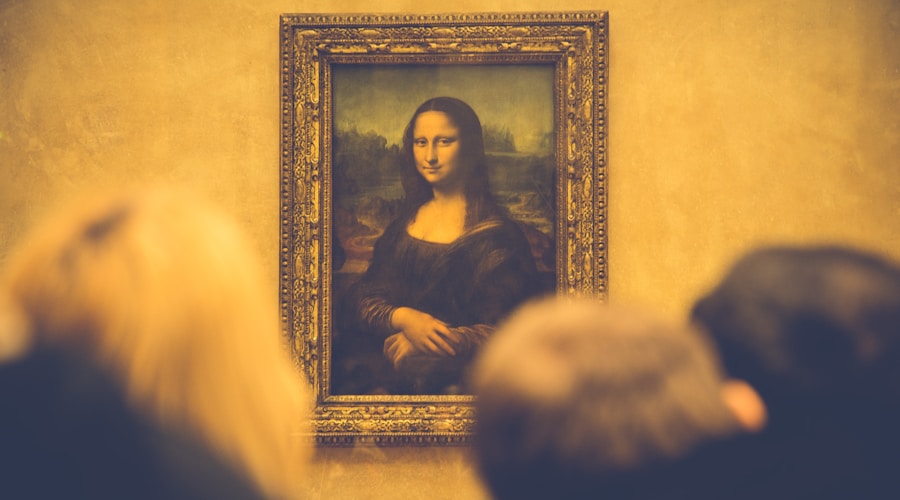Welcome to a journey into the fascinating world of creativity and divergent thinking. If you have ever wondered what makes some people incredibly innovative and creative, this article is for you. Whether you are an artist, a writer, an entrepreneur, or simply someone who wants to embrace a more imaginative mindset, understanding divergent thinking can open up a whole new world of possibilities for you.
In this article, we will explore the concept of divergent thinking, its link with creativity, and practical strategies to expand your mind and unleash your innate creative potential. So, fasten your seatbelt and get ready to embark on a journey that will transform the way you think and create. As Albert Einstein famously said, "Imagination is more important than knowledge, for knowledge is limited, whereas imagination embraces the entire world, stimulating progress, giving birth to evolution."1 .
Explaining Divergent Thinking
Divergent thinking is the ability to think outside the box, to explore multiple possibilities and perspectives. It's about breaking free from conventional thought patterns and embracing creativity in its purest form. As Dr. Ken Robinson, an expert in creativity and innovation, once said, "Divergent thinking isn’t the same thing as creativity, but that's an essential capacity for creativity".
When you engage in divergent thinking, you let go of limitations and allow your mind to wander freely, making unexpected connections and coming up with novel ideas. Instead of narrowing down options to find the "right" answer, you expand your thinking to consider all possibilities.
Divergent thinking is all about fluency, flexibility, originality, and elaboration. You generate a multitude of ideas, look at problems from different angles, come up with unique solutions, and add details to enrich your concepts2 .
In the words of author Malcolm Gladwell, "Divergent thinkers are idea-generators. They don't just solve problems, they discover possibilities. They open doors that others never even see"3 .
By understanding and embracing divergent thinking, you open the door to a world of endless creativity and innovation.
The Link Between Divergent Thinking and Creativity
Divergent thinking plays a crucial role in unlocking your creative potential. By exploring multiple solutions and possibilities, you are able to approach challenges in unconventional ways, leading to innovative and groundbreaking ideas. As a result, creativity flourishes.
According to psychologist J.P. Guilford, divergent thinking is the ability to "generate many different ideas or possibilities in response to a single stimulus or problem." This kind of thinking allows you to break free from traditional thought patterns and explore a wide range of possibilities. This is essential for creativity because it enables you to see beyond the obvious and delve into the realm of originality and novelty.
In fact, a study published in the Journal of Personality and Social Psychology found that individuals who exhibited divergent thinking traits were more likely to be creative and produce unique ideas. The study highlighted the link between divergent thinking and creativity, emphasizing the importance of embracing unconventional approaches to problem-solving and idea generation.
In essence, divergent thinking opens the door to creativity by expanding your perspective and encouraging you to consider multiple possibilities. As author Michael Michalko puts it, "Divergent thinking isn't the same thing as creativity, but it's an essential tool for creativity". By nurturing this form of thinking, you pave the way for innovative ideas and solutions to emerge, ultimately fueling your creativity.
By understanding the link between divergent thinking and creativity, you can harness the power of your mind to think outside the box and generate unique and imaginative ideas.

Unleashing Your Creative Potential
Unleashing Your Creative Potential
Now that you understand the importance of divergent thinking in unlocking creativity, it's time to unleash your creative potential. It's not enough to simply recognize the value of divergent thinking; you need to actively apply it to your life in order to see the benefits. Here are some strategies to help you do just that.
Embrace Openness
One of the first steps in unleashing your creative potential is to embrace openness. This means being open to new ideas, experiences, and perspectives. As author and entrepreneur, Steve Jobs, once said, "Stay hungry, stay foolish." It's important to stay hungry for new knowledge and experiences and to approach the world with a sense of foolishness, willing to challenge the status quo.
Engage in Playfulness
Embracing playfulness is another essential strategy for unleashing your creative potential. As psychologist Carl Jung noted, "The creation of something new is not accomplished by the intellect but by the play instinct." Give yourself permission to play and experiment without the fear of making mistakes. This can help you break free from the constraints of conventional thinking and tap into your natural creativity.
Surround Yourself with Diverse Perspectives
Exposing yourself to diverse perspectives can also help you unleash your creative potential. As entrepreneur and philanthropist, Richard Branson, observed, "The best way of learning about anything is by doing." Surround yourself with people who think differently from you, and actively seek out new experiences and viewpoints. This will help you expand your thinking and approach problems from multiple angles.
By embracing openness, engaging in playfulness, and surrounding yourself with diverse perspectives, you can begin to unleash your creative potential through the power of divergent thinking. Remember, creativity is not a talent; it's a way of operating. As you incorporate these strategies into your daily life, you'll find yourself thinking more creatively, generating innovative ideas, and solving problems in unconventional ways.
Daily Exercises to Boost Divergent Thinking
Daily Exercises to Boost Divergent Thinking
Now that you understand the importance and potential of divergent thinking, it's time to put it into practice with some daily exercises to expand your mind and boost your creativity.
Mind Mapping: Start by drawing a central idea or concept in the middle of a blank page and then add related ideas branching out from it. Allow your mind to explore different connections and associations. As creativity expert Ken Robinson said, "Mind mapping is an incredibly powerful tool for distilling and organizing your ideas".
Random Word Generation: Choose a random word and challenge yourself to brainstorm as many different uses or connections to that word as possible. This exercise helps break free from linear thinking and encourages you to make unexpected connections.
Reverse Thinking: Take a problem or a challenge and turn it on its head. "The reverse brainstorming technique forces you to reconsider the problem from different angles," suggests Dr. Jay Parkes in his book "Creative Problem Solving".
Daydreaming: Give yourself the permission to daydream. Let your mind wander and explore new possibilities without constraints. According to neuroscientist David Eagleman, "Daydreaming is the mind's favorite tool for creativity".
Try Something New: Challenge yourself to try something new each day, whether it's tasting a new food, listening to a different genre of music, or taking a different route to work. The novelty of new experiences can spark fresh ideas and connections in your mind.
Remember, creativity is not a skill reserved for a select few. It is a muscle that can be exercised and strengthened. By incorporating these daily exercises into your routine, you can unlock your potential for divergent thinking and unleash your creative genius.
Breaking Free from Conventional Thinking
Are you tired of feeling stuck in the same old patterns of thinking? It's time to break free from conventional thinking and embrace divergent thinking to unleash your creativity. Author Michael Michalko once said, "Divergent thinking is essential to creativity because it is the ability to see a problem from all angles and to explore all possibilities."
To break free from conventional thinking, you must be willing to challenge the status quo and question assumptions. As Albert Einstein famously said, "We cannot solve our problems with the same thinking we used when we created them." This means that to solve new problems and come up with innovative ideas, you must be willing to let go of old thought patterns and explore new ways of thinking.
One way to break free from conventional thinking is to expose yourself to diverse perspectives and ideas. Psychologist Roger von Oech once said, "Creativity is allowing yourself to make mistakes. Art is knowing which ones to keep." By surrounding yourself with a variety of viewpoints and embracing mistakes as part of the creative process, you can open your mind to new possibilities.
Another important strategy to break free from conventional thinking is to challenge assumptions and constraints. Author Tina Seelig encourages individuals to "reframe questions and assumptions by playing with them and trying to see them in new ways." By challenging the limits of what is possible and questioning the norms, you can expand your thinking and tap into your creative potential.
Remember, breaking free from conventional thinking is not always easy, but it is essential for nurturing your creativity. Embracing divergent thinking will allow you to see the world in a new light and unlock innovative solutions to the challenges you face.
Famous Examples of Divergent Thinkers
Divergent thinkers have made a significant impact on the world, shaking up conventional thought patterns and paving the way for new ideas. They are the visionaries, the pioneers, the mavericks who refuse to conform to the norm. Here are a few famous examples of divergent thinkers whose unconventional ideas and creative solutions have left a lasting legacy:
Leonardo da Vinci: The ultimate polymath, da Vinci was not only a renowned artist but also a brilliant inventor, scientist, and engineer. His ability to think divergently allowed him to envision concepts far ahead of his time. As he famously said, "Simplicity is the ultimate sophistication."
Marie Curie: The first woman to win a Nobel Prize, Curie's relentless curiosity and refusal to accept the status quo led to groundbreaking discoveries in the field of radioactivity. She once said, "Nothing in life is to be feared, it is only to be understood. Now is the time to understand more, so that we may fear less."
Steve Jobs: The co-founder of Apple Inc., Jobs revolutionized the tech industry with his out-of-the-box thinking and unyielding pursuit of perfection. His words "Stay hungry, stay foolish" continue to inspire individuals to embrace their unique ideas and take risks.
Maya Angelou: An acclaimed author and poet, Angelou's ability to capture the human experience with raw emotion and honesty is a testament to her divergent thinking. She highlighted the importance of embracing individuality, saying, "If you are always trying to be normal, you will never know how amazing you can be."
By studying the lives and works of these divergent thinkers, you can gain valuable insights into how to nurture your own creative potential and approach problem-solving from a fresh perspective. As you embark on this journey of exploration, remember the words of Ralph Waldo Emerson: "Do not go where the path may lead, go instead where there is no path and leave a trail."

Cultivating a Divergent Thinking Mindset
So, how can you cultivate a divergent thinking mindset? Start by embracing the unknown and being open to new ideas. Author and entrepreneur, Steven Johnson, advises, "Chance favors the connected mind." This means exposing yourself to diverse experiences and people so that your mind can make unexpected connections.
Moreover, psychologist and creativity researcher, Scott Barry Kaufman, encourages you to "embrace uncertainty and be open to different perspectives". This entails challenging your assumptions and seeking out alternative viewpoints. By doing so, you allow your mind to wander into uncharted territories, which is where true creativity thrives.
You can also cultivate a divergent thinking mindset by breaking away from routine and trying new things. As neuroscientist David Eagleman points out, "Novelty is a powerful way to get the brain's attention". So, try taking a different route to work, attempting a new hobby, or learning a new skill. By exposing yourself to novelty, you stimulate your brain to think divergently.
Lastly, practice mindfulness and engage in activities that allow your mind to wander freely. Cognitive psychologist Jonathan Schooler refers to this as "mind-wandering, which allows you to tap into your subconscious and generate unconventional ideas". So, take regular walks, engage in meditation, or simply immerse yourself in a creative activity. All of these practices can help you cultivate a divergent thinking mindset and unleash your creative potential.
Conclusion
Congratulations on completing this journey of exploring divergent thinking and its crucial role in unlocking your creative potential. Remember, creativity is not a gift limited to a select few, but a mindset and skill that can be nurtured and developed. As Albert Einstein famously said, "Imagination is more important than knowledge."
By embracing divergent thinking, you have opened yourself up to a world of possibilities and innovative solutions. As you go forward, continue to challenge yourself to break free from conventional thinking and explore new ideas and perspectives. Keep practicing daily exercises to boost your divergent thinking, and don't be afraid to think outside the box.
As Maya Angelou wisely said, "You can't use up creativity. The more you use, the more you have." So, keep on cultivating a divergent thinking mindset to continually expand your creative capabilities. Remember that the world is full of endless opportunities for those who dare to think differently.
In the words of Steve Jobs, "Stay hungry, stay foolish." Keep seeking out new experiences, learning from diverse sources, and embracing the unknown. With divergent thinking as your compass, there's no limit to what you can achieve.
Now, go forth and let your imagination soar. The world is waiting for the magic only you can create.

2Ken Robinson, "Out of Our Minds: Learning to be Creative"
3Robert Sternberg, "The Nature of Creativity"
4Malcolm Gladwell, "Blink: The Power of Thinking Without Thinking"
5J.P. Guilford, "The Nature of Human Intelligence" (1967)
6Journal of Personality and Social Psychology, "Divergent Thinking as a Predictor of Creative Performance" (2017)
7Michael Michalko, "Creative Thinkering: Putting Your Imagination to Work" (2012)
8Steven Johnson, Where Good Ideas Come From: The Natural History of Innovation (2010)
9Ken Robinson, "Out of Our Minds: Learning to be Creative" (2001)
10Dr. Jay Parkes, "Creative Problem Solving: Thinking Skills for a Changing World" (1992)
11David Eagleman, "Incognito: The Secret Lives of the Brain" (2011)
12Michael Michalko, "Creativity: The Mindset," (2011)
13Albert Einstein, "The Ultimate Quotable Einstein," (2010)
14Roger von Oech, "A Whack on the Side of the Head," (2008)
15Tina Seelig, "inGenius: A Crash Course on Creativity," (2012)
16Walter Isaacson, Leonardo da Vinci (2017)
17Marie Curie, Pierre Curie (1923)
18Walter Isaacson, Steve Jobs (2011)
19Maya Angelou, I Know Why the Caged Bird Sings (1969)
20Steven Johnson, Where Good Ideas Come From: The Natural History of Innovation (2010)
21Scott Barry Kaufman, Wired to Create: Unraveling the Mysteries of the Creative Mind (2016)
22David Eagleman, Incognito: The Secret Lives of the Brain (2011)
23Jonathan Schooler, "Inspired by Distraction: Mind Wandering Facilitates Creative Incubation", Psychological Science (2011)
24Keith Sawyer, Zig Zag: The Surprising Path to Greater Creativity (2013)
25Jonah Lehrer, Imagine: How Creativity Works (2012)
